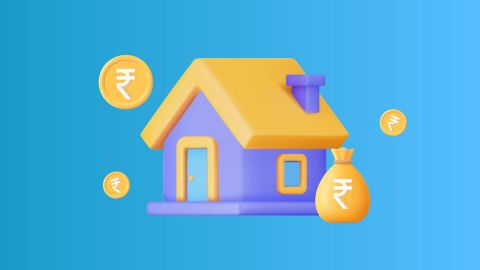Owning a house in India is a lifelong dream for many families. It’s more than just bricks and walls, it’s about building memories. But while this dream is special, it’s also expensive. The rising prices of labour, materials, and design mean that constructing your dream home can take up a large part of your savings. That’s why it's wise to know how much it might cost to build your home before you begin.
One of the best ways to prepare financially is to understand the construction cost per square foot. Knowing this figure allows you to plan your budget properly and reduces the chance of being surprised by sudden expenses. In this blog, we’ll explain three easy methods to calculate the construction cost per square foot. We’ll also walk you through a sample cost calculation, the key factors that affect construction rates, and some handy ways to save on your building costs. Whether you’re planning a small home or something more spacious, this guide will help you make better decisions.
When planning your dream home, securing the right financing is just as important as understanding construction costs. A home loan can help you manage both land purchase and construction expenses without straining your savings. Check your eligibility for a home loan from Bajaj Finserv to get funding up to Rs. 15 crore at competitive rates starting from 7.45%* p.a. You may already be eligible, find out by entering your mobile number and OTP.
How to calculate construction cost per square feet step-by-step
There are three useful ways to estimate the cost of building your house per square foot: using a simple formula, trying online calculators, or consulting with professionals. Let’s look at each method below.
1. Try the square foot cost formula
The easiest formula is:
Total Construction Cost = Area (sq. ft) × Construction Rate per sq. ft
Just multiply the total area you’re planning to build with the per sq. ft cost. These rates differ based on the type of construction—basic, standard, or luxury. But remember, the formula only gives an accurate result if you already know the total rate, including materials, labour, fittings, and other extra charges. It’s great for those who have some idea about current market costs.
2. Use online construction cost estimators
If you don’t want to do the maths yourself, there are handy online tools that calculate costs for you in seconds. Here are a few useful ones:
JK Cement House Construction Calculator – A simple and quick tool where you enter the house type, area in sq. ft, and location pin code. It gives you a full breakdown of costs, including material and labour charges, and even offers expert help on-site if needed.
UltraTech Home Construction Calculator – Gives you a complete phase-wise estimate, including timelines for each building stage based on your choices.
Brick & Bolt Calculator – Helps you understand not just the total cost but separates charges for built-up space, parking, balconies, and utility areas.
These calculators also factor in location, labour availability, and material prices, giving you a solid starting point.
3. Speak to a construction professional
When in doubt, it’s always best to get expert advice. Construction professionals offer experience-backed estimates and use advanced tools such as budgeting software. They don’t just give you the per square foot cost—they can break down your total budget with all details included. Getting professional help also means you’re more likely to avoid costly mistakes during the process. Look for trusted local contractors or builders to help you plan your project properly.
An example of residential construction cost per sq. ft in India
The table below outlines the construction cost per square foot for a 200 sq. ft house in Delhi using the average cost range for each component.
Component |
Cost range (INR per sq. ft) |
Total cost |
Basic construction materials |
1,500 – 2,000 |
300,000 – 400,000 |
Labour |
300 – 500 |
60,000 – 100,000 |
Architectural design |
100 – 200 |
20,000 – 40,000 |
Permit and approval fees |
50 – 100 |
10,000 – 20,000 |
Utilities and infrastructure |
200 – 300 |
40,000 – 60,000 |
Interior finishing |
500 – 800 |
100,000 – 160,000 |
Total estimated construction cost for 200 sq. ft = Rs. 5,30,000 – Rs. 7,80,000.
Average cost of constructing a room in India
The average cost of constructing a room in India depends on factors like location, material quality, and labour costs. Here's an estimate:
Work included |
Estimated Cost (Rs.) |
Foundation |
For a 4'x4' area with 4 ft depth, digging and soil work may cost around Rs. 3,200 (Rs. 450/m³). |
Brickwork |
Around Rs. 45,000, covering bricks, cement, and sand. |
Other expenses |
About Rs. 21,000 for concrete, beams, and base-level work. |
Reinforcement |
Reserve Rs. 26,000 for steel and RCC work for slabs and columns, including labour charges. |
Whether you are building a single room or an entire house, having adequate funding ensures you can complete your project without delays or compromises on quality. Explore home loan options from Bajaj Finserv that offer flexible repayment terms up to 32 years and quick approval within 48 hours*. You may already be eligible, check your offers by entering your mobile number and OTP.
Full house vs. first floor construction cost per square feet
The cost of building a house can differ based on whether you're constructing an entire house or just the first floor. In Delhi, the construction rate for a complete house usually falls between Rs. 2,700 and Rs. 3,000 per square foot. However, if you’re building only the first floor, the cost is generally higher—around Rs. 3,200 per square foot. This increase is mainly due to extra structural reinforcements, stronger foundation work, and additional support elements needed to safely build above the ground level.
Here's a quick comparison:
Type of construction |
Estimated cost per square foot (Rs.) |
Full house |
Rs. 2,700 – Rs. 3,000 |
First floor |
Rs. 3,200 |
Let’s see how this works in real terms. For instance, when it comes to a 200 sq. ft first floor: Total Cost = 200 × Rs. 3,200 = Rs. 6,40,000
Keep in mind that prices may vary depending on your location, the labour you hire, and the materials used. The slightly higher rate for the first floor covers the extra structure and foundation needs.






